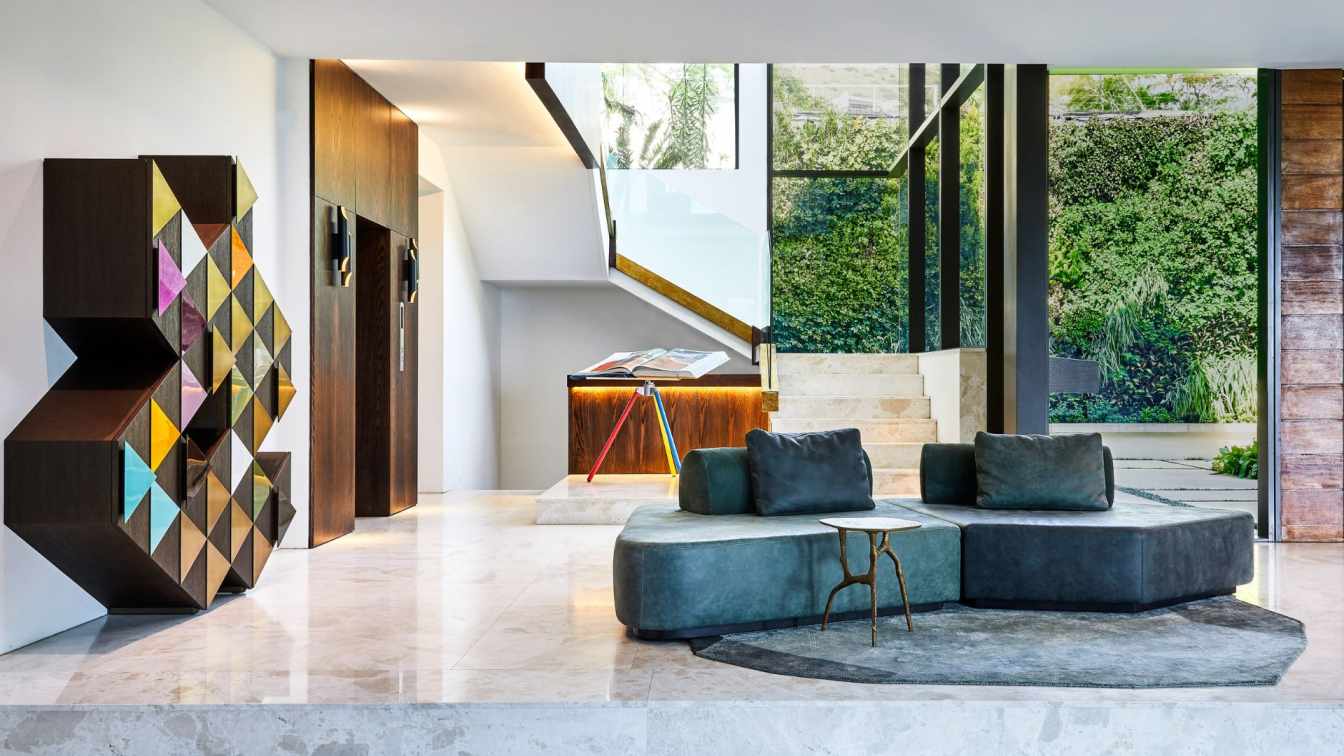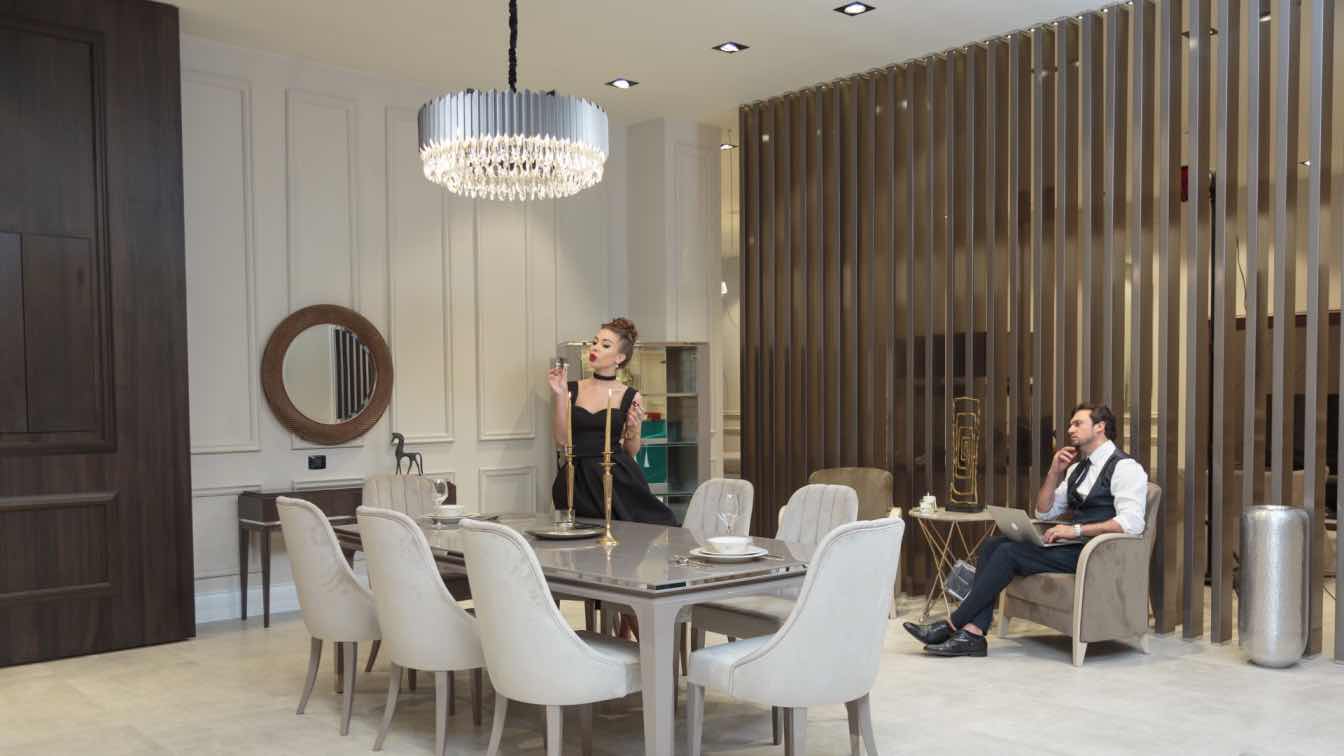Creating stunning architectural designs often starts with a solid visualization. Many architects struggle to bring their complex ideas to life, making it hard for clients and team members to share the same vision.
This is where AI image generators step into the spotlight, offering a modern solution to an age-old problem.
One fascinating fact about these tools is that they can transform basic text descriptions into detailed architectural images.
Imagine typing "futuristic cityscape with green rooftops" and seeing it come alive on your screen! Our blog will guide you through using AI in architecture, from choosing the right tool to integrating it seamlessly into your workflow.
Exploring AI Image Generators for Architectural Visualization
AI image generators are changing the game for architects. They turn words into detailed pictures of buildings and rooms, making design ideas come to life quickly.
Advantages of AI in Architectural Visualization
AI in architectural visualization brings a lot to the table. It makes things faster, more flexible, and saves money. With AI, what used to take ages now happens quickly. This means architects can see their ideas come to life without waiting too long or spending too much.
These AI tools also let architects play with different styles easily. They can try out various looks and feels for a building before deciding on the final design. This flexibility helps in making sure the finished project is just what everyone wanted. You can animate your pictures easily and utilize features such as lighting adjustments or perspective changes to bring static designs to life. This makes it simpler to showcase concepts to clients in a way that feels engaging and realistic.
Leading AI Image Generators for Architects
So, after seeing the good things AI can do for architectural visualization, let's look at some top tools. Architects have a few great choices like Midjourney, Playground AI, and PromeAI for coming up with new ideas.
Dall-E 3 shines with its artsy touches and text effects. It even powers Bing Image Creator. For those counting pennies, Limewire AI Studio lets you make ten images a day without spending a dime.
Then there's Veras; it plays well with Sketchup, Rhino, and Revit to turn models into stunning visuals. Don’t forget about PopAi which is another free ai image designer and assistant on the rise for architects wanting smart design help.
Features and Functions of AI Image Generators
After looking at the top AI image generators for architects, let's focus on what these tools can really do. These generators have many cool features. For example, Midjourney offers styles like default and raw.
Playground AI kicks things up a notch with fast generation speeds and a high limit on how many images you can make each day. Then there's PromeAI, which brings sketch-to-render tools to the table along with lots of style options for architectural work.
Vizcom also has sketch-to-render abilities and adds something unique with its creative fusion tools. Veras stands out by making 3D models look super real in photos. All these functions help architects create amazing visuals quickly without losing out on quality or style variety.
Integrating AI Image Generators into Architectural Workflows
Adding AI image generators to architectural work makes designing faster and smarter. It's a new way architects can turn ideas into visual plans quickly.
Design and Planning Using AI
Architects and urban planners are now turning to AI for help in design and planning. These tools let them see how new buildings and spaces could look. With AI image generators, they can play with different layouts, styles, and lighting before making final decisions.
This means less guesswork and more precision early on.
For big projects like city parks or new neighborhoods, AI shows how everything fits together from the start. It helps picture green spaces among buildings or how light falls in an area throughout the day.
Plus, these generators make it easy to try out lots of looks quickly — important when time is short but options need exploring.
Simplifying the Design Process with AI
Simplifying the design process is the next step. These image generators save architects a lot of time and money.
Think about all those hours spent on traditional rendering methods - now, they're cut down significantly. Architects use AI to quickly try out different ideas. They can mix images, change parts of an image, or zoom in and out to see new details.
AI also moves us toward platforms where architects have more control over their designs from the start. This means they can explore many options fast without spending too much extra time or money.
Picture being able to tweak your design dozens of times in a day! That’s what these tools bring to the table: speed and flexibility for every project phase.
Improving Architectural Projects with AI
AI transforms how architects work, making projects better. With AI image generators, designers quickly test ideas in the conceptual design phase. Tools like High-Creativity (Low-Consistency) get creative juices flowing right at the start.
For more detailed looks, Constant Composition Tools help keep designs true to initial concepts. This way, teams use AI for both big picture ideas and fine details.
Vizcom's tool shows how style and technology merge; it adds an Art Nouveau twist to buildings with ease. Also, Sketch Rendering platforms change the game by letting architects control materials and rendering times without sweat.
Each project becomes a chance to push boundaries, thanks to AI’s power in architectural design.
The Future of AI in Architectural Design
AI is gearing up to be a big helper in architectural design. With tools like AI optimizers and code analyzers, architects can make buildings that are not just beautiful but smart too.
These tools help in making the design process faster and more accurate. As technology gets better, architects will find new ways to work with AI. This means they can focus more on being creative while letting AI handle the complex bits.
Looking ahead, the role of AI in architecture will keep growing. Tools for generative design are already changing how buildings come to life on screen before they are built. In the future, working closely with these technologies will be key for architects who want to stay ahead.
They will adapt by learning how to best use these tools in their projects, making designs that stand out not just for how they look but also for how well they work.
Conclusion
AI image generators have evolved the way architects work. These tools make creating designs fast and easy, giving high-quality images from simple words. They let designers try new ideas quickly and see them as real pictures. Using AI can make architecture better by adding creativity and speed to the process. So, give it a try – it might just lead to great things in your next project!







